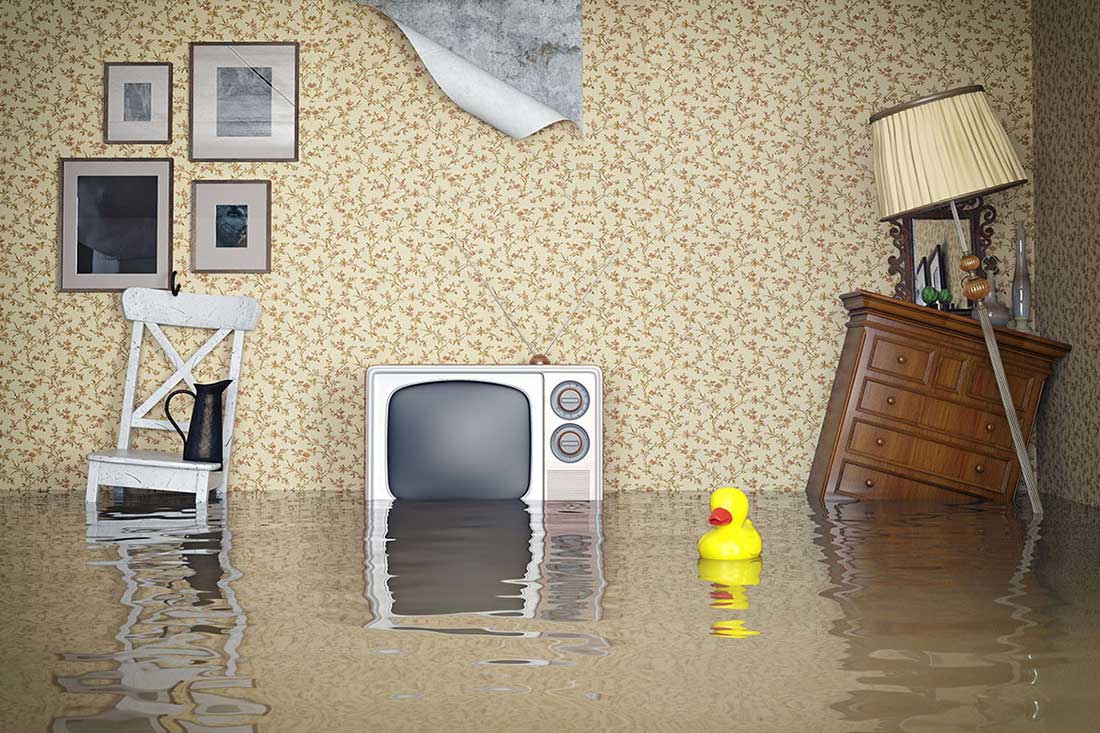
23 Oct Handling a natural disaster
Spring has brought wild weather to many parts of Australia ripping through many states and causing considerable damage to properties. It’s likely to continue this summer too. So, let’s take a look at the procedure surrounding rental properties that are affected by natural disasters.
Our best advice is to be methodical and take things step by step. The aftermath of a natural disaster should not be a ‘them vs. us’ situation. The most important thing is to apply common sense and goodwill as this achieves the best possible outcome for both you and your tenants.
1. Reassure your tenants
Tenants may be dealing with loss of possessions as well as significant trauma if they were in the property at the time of the disaster, so their emotional well being should be considered. You’ll ease their situation and have a better outcome if you keep the tenants in the loop by letting them know the measures you’re taking to resolve the property damage.
2. Assess the damage
When you know it’s safe, arrange to inspect the property as soon as possible after the disaster event. Don’t take the tenant’s word for it that everything is okay. If necessary, issue the correct entry notice and visit the property to make your own assessment.
3. Contact your insurance company
Notifying your insurance company about the situation is essential. Make sure you follow any instructions they give to you.
4. Decide if the property is liveable
Worst-case scenario it will be taken out of your hands if authorities step in to declare a house or area unsafe and uninhabitable. Otherwise you may need to seek expert advice. By making a guess about structural soundness, electrics, or plumbing you will be exposing yourself to significant liability if you’re wrong.
5. Decide what the tenant will do
This is less of an issue if the property is deemed unliveable by authorities. Then the tenant has no choice and may simply need assistance in vacating the property as the tenancy has lawfully ended.
If the property has suffered partial damage problems may arise as you may want the tenancy to continue whereas the tenants may want it to end. This is where you need to work with the tenant. It is much easier to repair a vacant property but you cannot ‘force’ a tenant to move out in this situation. If you cannot resolve the situation you will have to discuss dispute resolution with the relevant authority.
Whatever the situation, make sure the outcome is put in writing.
If the tenancy is coming to an end this would be in the form of a Termination Notice issued by either you or the tenant. If it is agreed that the tenant will remain in the property whilst repairs are undertaken, you should send a letter to the tenant confirming this arrangement and note that tradespeople will be having access to the property. The standard entry notice periods are waived for such repairs as it is an emergency.
6. Speak with your accountant
This is the best way to get specialist advice on the financial and taxation aspects of the situation.
What do I do if –
The property is unliveable; do I have to pay removal expenses for the tenant?
No. You are not obligated to meet any vacate costs.
The property is unliveable; what happens with the bond?
You cannot make any claim for property damage caused by the disaster. If the tenant was in arrears at the time the property is declared uninhabitable, or if they had caused some other damage, you are entitled to claim this amount.
The tenant is remaining in the property; what happens with the rent?
The tenants must continue to pay rent, however you may come to an agreement where the rent is decreased for the duration of the repairs. This is dependent on the nature of the damage. For example, if the damage to the property means that one room is out of action (or maybe the air conditioning cannot be used) you might decide to reduce the rent as a sign of goodwill for the duration of the repairs.
Put any such agreement in writing so it is clear about the date on which the rent will return to normal.
Can the rent be increased when the repairs are completed?
No – if the same tenancy is in place. For example the tenant has remained in the property or has temporarily vacated and returns when repairs are completed.
Yes – if a new tenancy has commenced. For example, the previous tenant permanently moved out and a new tenant has moved in.
Do I have to provide alternative accommodation if the tenant is moving out while the property is being repaired?
You are under no obligation to do so as the tenant is not paying rent during this period.
Duty of disclosure: most states have laws relating to duty of disclosure requirements for landlords to tenants, for example: in NSW if the landlord is aware of the history they must tell the tenant prior to signing a tenancy agreement if the premises has been subject to a natural disaster in the last 5 years.



Sorry, the comment form is closed at this time.